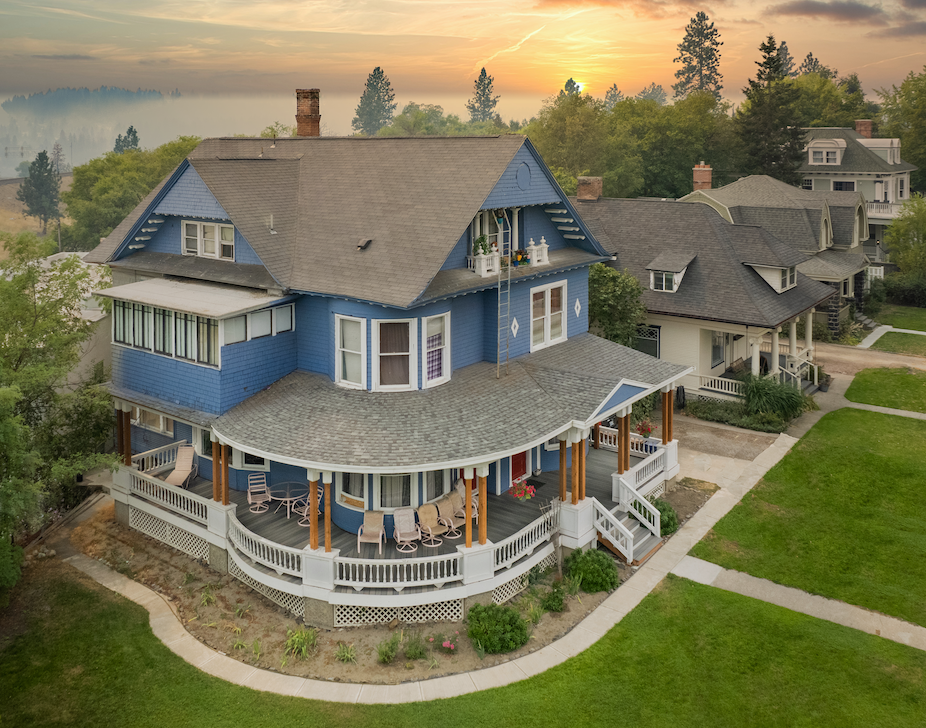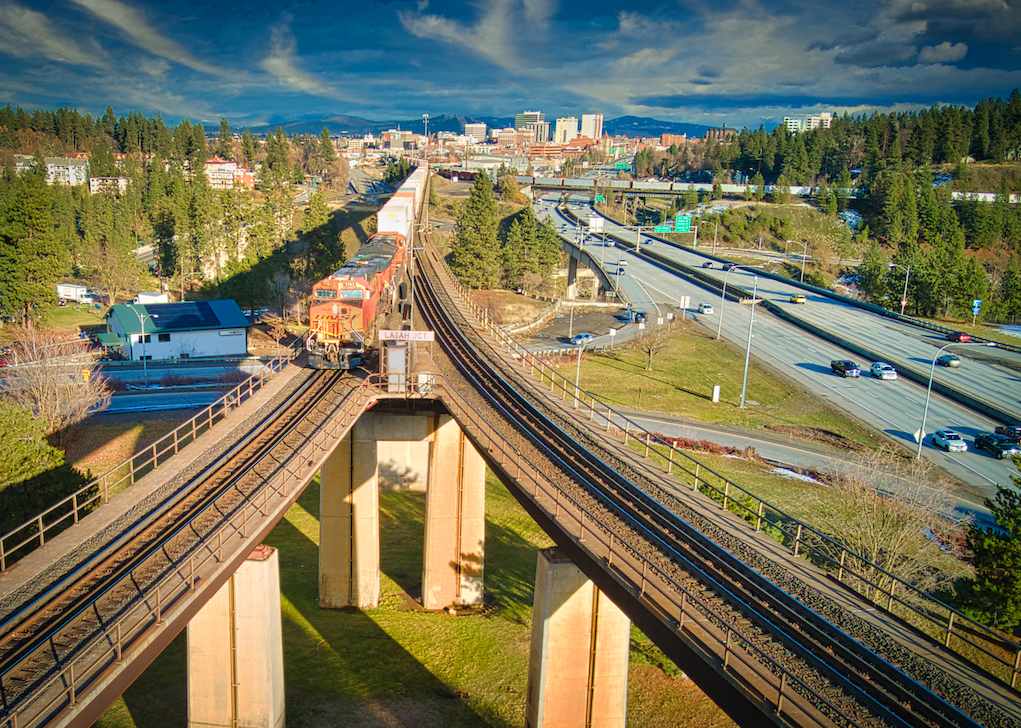
Land Use
The land use element plays a crucial role in shaping the built
environment and social sphere of the community. The main purpose of
this element is to designate the general distribution, intensity and
location of the uses of land (e.g., agricultural, residential,
commercial, recreational, industrial, etc.). Land use planning
provides the basis for the county’s zoning laws and restricts
certain uses of land to promote orderly development that encourages
social gathering, environmental protection and resource
conservation, and provides for transportation and economic needs.
Land use planning includes multiple considerations, such as:
-
Population growth and demographics
-
Housing needs
-
Suitability of land for development
-
Placemaking for quality of rural, suburban, and urban lifestyles
-
Modes of transportation
-
Protection of groundwater for public water supplies
-
Potential environmental hazards
-
Energy and infrastructure
-
Climate change

Capital Facilities
The capital facilities element identifies current capital facility
needs, future needs to serve the growth anticipated in the
comprehensive plan, and how to fund them. Capital facilities
planning is essential to using limited funding wisely and most
efficiently maximize our funding opportunities and provides decision
makers with the knowledge to improve and protect public services
such as access to parks and recreation, coordination of schools and
student growth, wastewater treatment, stormwater management,
necessary water supply, utilities, and other important services.
Additionally, the capital facilities plan (CFP) helps implement the
land use element by showing how public facilities and services will
accommodate the levels and intensities of development envisioned in
the plan, and at the adopted levels of service.
The element includes:
-
An inventory of existing capital facilities owned by public
entities, showing the locations and capacities of the capital
facilities
-
A forecast of the future needs for such capital facilities
-
The proposed locations and capacities of expanded or new capital
facilities
-
At least a six-year plan that will finance such capital
facilities within projected funding capacities and clearly
identifies sources of public money for such purposes
-
A requirement to reassess the land use element if probable
funding falls short of meeting existing needs and to ensure that
the land use element, capital facilities plan element, and
financing plan within the capital facilities plan element are
coordinated and consistent

Economic Development
A healthy economy means good-paying jobs and economic opportunities
for all residents. It also means a stronger tax base for public
infrastructure projects, including schools, police, fire protection,
parks, road repairs and other improvements and amenities. The
economic development element focuses on multiple areas to foster
economic growth, vitality, and a high quality of life:

Housing
The housing element plays a critical role in the comprehensive plan,
working to ensure that residents can find and access quality,
affordable housing in their communities. This chapter includes
several pieces of analysis, including an inventory of current
housing stock and the projected additional housing units needed over
the next 20 years, a breakdown of current housing costs, potential
locations of various housing types, and more.
Key concepts include:


Transportation
Transportation planning is important for residents and visitors
alike as it helps ensure that people and goods can adequately travel
throughout Spokane County safely and conveniently. The
transportation element provides a 20-year vision for Spokane
County’s transportation network and serves as an action plan to
ensure that the network will have capacity and financing to
accommodate future growth.
Key concepts include:


Rural Lands
Rural areas are defined as lands outside of designated urban areas
and which are not long-term resource lands (agriculture, forest, and
minerals). Rural land use planning is focused on how non-urban and
non-resource lands may be developed, as well as their relationship
to resource lands and other qualities of the natural environment.
The rural element places an emphasis on preserving rural economies
and traditional lifestyles; the economic prosperity of rural
residents through small-scale, rural-based employment and
self-employment; compatibility with the use of land by wildlife;
private stewardship of rural land and the preservation of open
space; and overall enhancing the rural sense of community and
quality of life.
Key concepts include:

Natural Environment
The natural environment element combines several environmentally
related topics, including Spokane County’s natural resources
(agriculture, forest, and mineral lands) and critical areas
(wetlands, critical aquifer recharge areas, fish and wildlife
conservation areas, frequently flooded areas and geologically
hazardous areas), as well as open space corridors, tree
conservation, shorelines, surface water quality and quantity and
air quality. Spokane County’s diverse natural environment and
resource lands hold much significance regarding economic,
environmental, and social/cultural importance, and the
conservation and protection of these vital resources requires
input and expertise from all facets of the Spokane County
community.
Key concepts include:
Natural Resources and Critical Areas Designation
The classification and designation of agricultural
lands, forest lands, mineral resource lands and critical
areas using the best available science, so that the
economic, environmental, and social/cultural benefits
are enhanced or retained.
Open Space Preservation
Preservation of open space areas that function as a
system of corridors so that opportunities for
recreation, trails, wildlife habitat and connection of
critical areas are maintained.


Climate Change and Resiliency
Climate change and resiliency is a newly requirement element per
RCW 36.70.70(9)(a) and will serve as an important part of
Spokane County’s 20-year plan to address climate change and its
impacts. Human activity is understood to have caused global
temperatures to rise 1.1 degrees Celsius since the beginning of
the industrial revolution. By the 2030s, global temperatures are
expected to rise 1.5 degrees Celsius. For Spokane County, which
hosts a diverse array of landscapes, this means hotter days,
reduced snowpack, higher winter streamflow, lower summer
streamflow, and greater susceptibility to climate hazards like
wildfires. Many of the impacts of climate change can equate to
millions of dollars of losses, as well as lost jobs and even
lost lives. This is particularly true for communities in Spokane
County that are overburdened.
Key concepts include:
Climate Resilience
The process of anticipating and adapting to changes in
the climate while minimizing negative impacts on natural
systems and built communities.
GHG Emission Reduction
Actions to reduce the amount of greenhouse gases emitted
within a jurisdiction (such as Spokane County).
Adaptation
Adjusting to new climate risks to protect existing
community assets.
Hazard Mitigation
Reducing or eliminating long-term risks to people or
property from natural hazards.
Environmental Justice
The prioritization of overburdened communities in the
creation of policies designed to adapt to and mitigate
the effects of climate change.
Co-benefits
Additional social, economic, and environmental benefits
of climate policies.
Overburdened Communities
Communities consisting of people traditionally
underrepresented in policy discussions and/or acutely
impacted by climate change. Overburdened groups may
include low-income households, racial and ethnic
minorities, people with chronic or debilitating health
conditions, etc. Spokane County has several
neighborhoods and regions that have been classified as
“overburdened”.

Parks and Recreation
Parks and recreational areas provide long-term benefits to the
community by creating a connection to the outdoors and the
wildlife it hosts as well as provide for passive and active
recreational activities. The parks and recreation element
determines the type and level of park and recreational services
that are desired by the community, providing information and
direction to decision-makers on park issues and identifies
future park and recreation needs so that available resources may
be efficiently allocated. The element is heavily coordinated and
integrated with the Capital Facilities element and the Natural
Environment element to ensure these lands are conserved for
wildlife and accessible to the community.